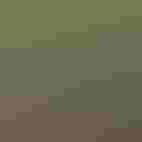Pacific Golden-Plover
At a Glance
This bird is so similar to American Golden-Plover that the two were regarded as one species until 1993. However, the birds can tell the difference: where the two forms overlap in western Alaska, they seldom or never interbreed. Their migratory routes are strikingly different: American Golden-Plover migrates to South America, while Pacific Golden-Plover flies from Alaska to islands in the Pacific and often on to Australia, regularly covering over 2,000 miles in a single nonstop flight.
All bird guide text and rangemaps adapted from Lives of North American Birds by Kenn Kaufman© 1996, used by permission of Houghton Mifflin Harcourt Publishing Company. All rights reserved.
Category
Plovers, Sandpiper-like Birds
IUCN Status
Least Concern
Habitat
Coasts and Shorelines, Saltwater Wetlands, Tundra and Boreal Habitats
Region
Alaska and The North, California, Northwest, Western Canada
Behavior
Direct Flight, Rapid Wingbeats, Running
Population
220.000
Range & Identification
Migration & Range Maps
In fall, most Pacific Golden-Plovers from Alaska probably make nonstop flight to Hawaii; some winter there, others continue to other islands, Australia, or New Zealand. Small numbers occur along west coast of Canada and United States, mostly in fall, a few spending the winter.
Description
9-11" (23-28 cm). Very similar to American Golden-Plover, not always identifiable. In breeding plumage, Pacific shows more white below, in stripe extending along sides. Fall and winter birds usually look brighter, more golden, and have shorter wingtips than Americans.
Size
About the size of a Robin
Color
Black, Tan, White, Yellow
Wing Shape
Pointed, Tapered
Tail Shape
Rounded, Short, Square-tipped
Songs and Calls
A mellow quee-lee-lee.
Call Pattern
Rising
Call Type
Whistle
Habitat
Tundra (summer); short-grass fields, mudflats, shores during migration. During migration, often on extensive areas of short grass, flooded pastures, as well as on mudflats, beaches. In winter in Hawaii, often forages on lawns. In western Alaska, where the two golden-plovers overlap in summer, the Pacific typically nests at lower elevations than the American, on wetter tundra with taller vegetation.
Sign up for Audubon's newsletter to learn more about birds like the Pacific Golden-Plover
Behavior
Eggs
4. Pale buff to cinnamon, boldly blotched with black and brown, well camouflaged when seen against varied tundra vegetation. Incubation is by both parents, about 25 days. Male reportedly incubates by day, female at night.
Young
Downy young leave nest shortly after hatching. Both parents tend young, but young find all their own food. Age at first flight about 26-28 days.
Feeding Behavior
Typically they walk or run a few steps and then pause, then move forward again, pecking at the ground whenever they spot something edible.
Diet
Mostly insects, also mollusks, crustaceans, berries. On breeding grounds, feeds mostly on insects, including beetles, flies, and others, also some berries. In migration in open fields, eats wide variety of insects, including grasshoppers, caterpillars. On shores, also feeds on small crustaceans and mollusks. During migration seasons, may eat many berries.
Nesting
Males perform flight display over breeding territory by flying high, with exaggerated slow, deep wingbeats, while giving a repeated, plaintive teee-chewee whistle. Nest site is on ground, on dry ground often surrounded by wet tundra. Nest (probably built by male) is shallow depression in tundra, lined with lichens, moss, grass, leaves.
Conservation
Conservation Status
Formerly hunted during migration in Hawaii, now protected and occurs in good numbers. Large numbers of shorebirds are killed for food in some parts of eastern Asia, including Pacific Golden-Plovers in at least a few areas. Wintering areas on Pacific islands vulnerable to sea level rise caused by climate change.
Climate Threats Facing the Pacific Golden-Plover
Choose a temperature scenario below to see which threats will affect this species as warming increases. The same climate change-driven threats that put birds at risk will affect other wildlife and people, too.








